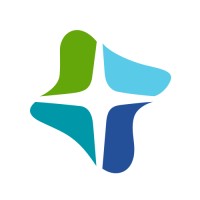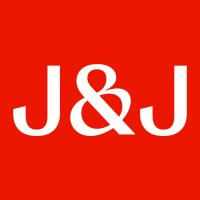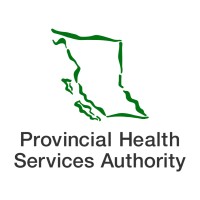
St. Luke's Health Company Cyber Security Posture
chistlukeshealth.orgSt. Luke’s Health, a member of CommonSpirit Health, is home to 16 hospitals in Texas that deliver excellent whole-person care with humankindness to the Brazos Valley, East Texas and Greater Houston. St. Luke's includes Baylor St. Luke’s Medical Center, the joint venture research and teaching hospital for Baylor College of Medicine. Home to the nationally accredited and NCI-designated Dan L Duncan Comprehensive Cancer Center, St. Luke’s delivers nationally-recognized care within a Christian ministry of healing. Social Media Privacy Policy: http://bit.ly/2fpll4B
SLH Company Details
st-luke's-health
2771 employees
40777.0
62
Hospitals and Health Care
chistlukeshealth.org
Scan still pending
ST._3686931
In-progress
Between 800 and 900
This score is AI-generated and less favored by cyber insurers, who prefer the TPRM score.
 SLH Global Score
SLH Global Score.png)

St. Luke's Health Company Scoring based on AI Models
| Model Name | Date | Description | Current Score Difference | Score |
|---|---|---|---|---|
| AVERAGE-Industry | 03-12-2025 | This score represents the average cybersecurity rating of companies already scanned within the same industry. It provides a benchmark to compare an individual company's security posture against its industry peers. | N/A | Between 800 and 900 |
St. Luke's Health Company Cyber Security News & History
| Entity | Type | Severity | Impact | Seen | Url ID | Details | View |
|---|---|---|---|---|---|---|---|
| Dignity Health | Breach | 85 | 4 | 08/2016 | DIG15131522 | Link | |
Rankiteo Explanation : Attack with significant impact with customers data leaksDescription: Dominican Hospital, part of Dignity Health, accedentially suffered from a data breach incident in August 2016. The attack compromised the name, account number, admission date, length of stay, total charges, unit they were seen in, room number they were seen in, and insurance carrier name. The health plan that received the transmission has been cooperating with the hospital and expected to provide an attestation that the errant data was destroyed. Dominican Hospital took action and provided traning sessions to their staff and took disciplinary action. | |||||||
| CommonSpirit Health | Breach | 100 | 4 | 01/2023 | COM205827123 | Link | |
Rankiteo Explanation : Attack with significant impact with customers data leaksDescription: CommonSpirit Health is now facing a class action lawsuit because of the cyberattacks that it faced in 2022. The lawsuit was initiated because the attacks impacted facilities across one of the largest nonprofit healthcare systems in the US. Back in the last year, CommonSpirit began reporting IT outages, EHR downtime, and appointment cancellations in early October, later confirming that these disruptions were caused by attacks. The latest lawsuit alleges that CommonSpirit lost control of highly sensitive information as a result of the breach and suggested that the health system has not been forthcoming about the breach. It was also alleged that the number of actual victims of the Data Breach may be much higher to approx twenty million individuals. The plaintiffs are seeking reimbursement for out-of-pocket costs, credit monitoring services, and improvements to CommonSpirit’s data security systems. | |||||||
| CHI Health | Cyber Attack | 100 | 6 | 10/2022 | CHI234511122 | Link | |
Rankiteo Explanation : Attack threatening the economy of a geographical regionDescription: CHI Health locations in Omaha suffered an IT security incident that affected its electronic health records and other systems. CHI had to take some information technology systems offline as a precautionary measure. | |||||||
| CommonSpirit Health | Cyber Attack | 100 | 7 | 10/2022 | COM01921122 | Link | |
Rankiteo Explanation : Attack that could injure or kill peopleDescription: CommonSpirit, the second-largest nonprofit hospital chain in the U.S., suffered a cybersecurity incident that disrupted medical services across the country. The attack caused certain IT systems including electronic health records and other systems to go offline which resulted in rescheduling some patient appointments. | |||||||
| CHI | Data Leak | 85 | 3 | 02/2019 | CHI25116223 | Link | |
Rankiteo Explanation : Attack with significant impact with internal employee data leaksDescription: CHI Health locations in Omaha experienced an IT security incident that affected electronic health records and other systems of the organization. After that, some information technology systems have been taken offline as a precautionary measure for the organization notified. All CHI Health facilities in Omaha including Lakeside Hospital, Creighton University Medical Center-Bergan Mercy, and Immanuel Medical Center have been impacted. The organization also stated that their facilities are following existing protocols for system outages and taking steps to minimize the disruption. | |||||||
| St. Luke's Health | Ransomware | 100 | 6 | 10/2022 | STL235161022 | Link | |
Rankiteo Explanation : Attack threatening the economy of a geographical regionDescription: The parent company of St. Luke's was the victim of a ransomware attack that affected the company's facilities in 22 states. Vital digital records have been replaced by slow, unfamiliar, and occasionally incomplete paper records as a result of the ransomware attack, which has caused a "internal calamity." CommonSpirit Health stated, "We are taking steps to alleviate the disruption and maintain continuity of service. Patient care is our first concern. We apologise for any inconvenience. | |||||||
| CommonSpirit Health | Ransomware | 100 | 6 | 10/2022 | COM23211022 | Link | |
Rankiteo Explanation : Attack threatening the economy of a geographical regionDescription: One of the largest nonprofit healthcare systems in the U.S., CommonSpirit targeted by a ransomware attack that caused widespread IT outages at hospitals across the country. This attack impacted several electronic health record systems across the country. They investigated the incident and hired cybersecurity specialists to deal with the response and contain the incident. | |||||||
St. Luke's Health Company Subsidiaries

St. Luke’s Health, a member of CommonSpirit Health, is home to 16 hospitals in Texas that deliver excellent whole-person care with humankindness to the Brazos Valley, East Texas and Greater Houston. St. Luke's includes Baylor St. Luke’s Medical Center, the joint venture research and teaching hospital for Baylor College of Medicine. Home to the nationally accredited and NCI-designated Dan L Duncan Comprehensive Cancer Center, St. Luke’s delivers nationally-recognized care within a Christian ministry of healing. Social Media Privacy Policy: http://bit.ly/2fpll4B
Access Data Using Our API

Get company history
.png)
SLH Cyber Security News
AI Agent & Copilot Podcast: St. Luke's University Health Network On Expanding AI Use Cases
Welcome to the AI Agent & Copilot Podcast, analyzing the latest AI Copilot and agent developments from Microsoft and its partners, ...
Powerlist – Shawna Hofer – St. Luke’s Health System
Shawna Hofer, chief information security officer at St. Luke's Health System, has led cybersecurity efforts for eight years and has recently ...
Healthcare Data Breach Statistics
In 2023, more than 93 million healthcare records were exposed or stolen in data breaches at business associates compared to 34.9 million records ...
Boise State’s cyber operations and resilience students use internships to catapult their careers
Boise State's cyber operations and resilience program helps students prepare for the workforce through valuable internships.
17 Health Systems Team With Abundant Venture Partners
Chicago-based Abundant Venture Partners said it is partnering with 17 health systems to build sustainable companies that benefit healthcare ...
Cybersecurity Leaders to Convene at the 2025 Cyber Resilience Summit
The 2025 Cyber Resilience Summit is a premier two-day event designed to address the growing cyber threats and equip organizations with ...
7 Best Responses to "I'm a CISO and a Woman, Ask Me Anything"
Here are the key lessons that stood out. 1. Don't let others define your path. Q: What challenges do you face as a woman in cybersecurity, and ...
Navigating Cybersecurity in the Cloud Era : Cloud Security, Data Sovereignty, and Regulatory Frameworks | Episode 25
As cloud adoption accelerates across the Philippines, organizations are wrestling with a complex web of cybersecurity threats, ...

SLH Similar Companies

Johnson & Johnson
At Johnson & Johnson, we believe health is everything. As a focused healthcare company, with expertise in Innovative Medicine and MedTech, we’re empowered to tackle the world’s toughest health challenges, innovate through science and technology, and transform patient care. All of this is possibl

Adventist Health
Adventist Health is a faith-inspired, nonprofit integrated health system serving more than 100 communities on the West Coast and Hawaii with over 440 sites of care. Founded on Adventist heritage and values, Adventist Health provides care in hospitals, clinics, home care agencies, hospice agencies, a

Provincial Health Services Authority
Canada's first provincial health services authority. Provincial Health Services Authority (PHSA) is one of six health authorities – the other five health authorities serve geographic regions of BC. PHSA's primary role is to ensure that BC residents have access to a coordinated network of high-quali

Nationwide Children's Hospital
Nationwide Children’s is one of America's largest pediatric hospitals, an international leader in research and is ranked in all 10 specialties on U.S. News & World Report’s 2024-25 “America’s Best Children’s Hospitals” list. Our staff, comprised of 1,600 medical professionals and over 15,000 employe

St. Luke's University Health Network
Founded in 1872, St. Luke’s University Health Network (SLUHN) is a fully integrated, regional, non-profit network of more than 20,000 employees providing services at 15 campuses and 300+ outpatient sites. With annual net revenue of $3.4 billion, the Network’s service area includes 11 counties in tw

Medical University of South Carolina
The Medical University of South Carolina (MUSC) is a public institution of higher learning the purpose of which is to preserve and optimize human life in South Carolina and beyond. The university provides an interprofessional environment for learning and discovery through education of health care p

Frequently Asked Questions (FAQ) on Cybersecurity Incidents
SLH CyberSecurity History Information
Total Incidents: According to Rankiteo, SLH has faced 7 incidents in the past.
Incident Types: The types of cybersecurity incidents that have occurred include ['Ransomware', 'Breach', 'Cyber Attack', 'Data Leak'].
Total Financial Loss: The total financial loss from these incidents is estimated to be {total_financial_loss}.
Cybersecurity Posture: The company's overall cybersecurity posture is described as St. Luke’s Health, a member of CommonSpirit Health, is home to 16 hospitals in Texas that deliver excellent whole-person care with humankindness to the Brazos Valley, East Texas and Greater Houston. St. Luke's includes Baylor St. Luke’s Medical Center, the joint venture research and teaching hospital for Baylor College of Medicine. Home to the nationally accredited and NCI-designated Dan L Duncan Comprehensive Cancer Center, St. Luke’s delivers nationally-recognized care within a Christian ministry of healing. Social Media Privacy Policy: http://bit.ly/2fpll4B.
Detection and Response: The company detects and responds to cybersecurity incidents through {description_of_detection_and_response_process}.
Incident Details
Incident 1: Ransomware Attack
Title: {Incident_Title}
Description: {Brief_description_of_the_incident}
Date Detected: {Detection_Date}
Date Publicly Disclosed: {Disclosure_Date}
Date Resolved: {Resolution_Date}
Type: {Type_of_Attack}
Attack Vector: {Attack_Vector}
Vulnerability Exploited: {Vulnerability}
Threat Actor: {Threat_Actor}
Motivation: {Motivation}
Incident 2: Data Breach
Title: {Incident_Title}
Description: {Brief_description_of_the_incident}
Date Detected: {Detection_Date}
Date Publicly Disclosed: {Disclosure_Date}
Date Resolved: {Resolution_Date}
Type: {Type_of_Attack}
Attack Vector: {Attack_Vector}
Vulnerability Exploited: {Vulnerability}
Threat Actor: {Threat_Actor}
Motivation: {Motivation}
Common Attack Types: The most common types of attacks the company has faced are ['Breach', 'Cyber Attack', 'Ransomware'].
Identification of Attack Vectors: The company identifies the attack vectors used in incidents through {description_of_identification_process}.
Impact of the Incidents
Incident 1: Ransomware Attack
Financial Loss: {Financial_Loss}
Data Compromised: {Data_Compromised}
Systems Affected: {Systems_Affected}
Downtime: {Downtime}
Operational Impact: {Operational_Impact}
Conversion Rate Impact: {Conversion_Rate_Impact}
Revenue Loss: {Revenue_Loss}
Customer Complaints: {Customer_Complaints}
Brand Reputation Impact: {Brand_Reputation_Impact}
Legal Liabilities: {Legal_Liabilities}
Identity Theft Risk: {Identity_Theft_Risk}
Payment Information Risk: {Payment_Information_Risk}
Incident 2: Data Breach
Financial Loss: {Financial_Loss}
Data Compromised: {Data_Compromised}
Systems Affected: {Systems_Affected}
Downtime: {Downtime}
Operational Impact: {Operational_Impact}
Conversion Rate Impact: {Conversion_Rate_Impact}
Revenue Loss: {Revenue_Loss}
Customer Complaints: {Customer_Complaints}
Brand Reputation Impact: {Brand_Reputation_Impact}
Legal Liabilities: {Legal_Liabilities}
Identity Theft Risk: {Identity_Theft_Risk}
Payment Information Risk: {Payment_Information_Risk}
Average Financial Loss: The average financial loss per incident is {average_financial_loss}.
Commonly Compromised Data Types: The types of data most commonly compromised in incidents are {list_of_commonly_compromised_data_types}.
Incident 1: Ransomware Attack
Entity Name: {Entity_Name}
Entity Type: {Entity_Type}
Industry: {Industry}
Location: {Location}
Size: {Size}
Customers Affected: {Customers_Affected}
Incident 2: Data Breach
Entity Name: {Entity_Name}
Entity Type: {Entity_Type}
Industry: {Industry}
Location: {Location}
Size: {Size}
Customers Affected: {Customers_Affected}
Response to the Incidents
Incident 1: Ransomware Attack
Incident Response Plan Activated: {Yes/No}
Third Party Assistance: {Yes/No}
Law Enforcement Notified: {Yes/No}
Containment Measures: {Containment_Measures}
Remediation Measures: {Remediation_Measures}
Recovery Measures: {Recovery_Measures}
Communication Strategy: {Communication_Strategy}
Adaptive Behavioral WAF: {Adaptive_Behavioral_WAF}
On-Demand Scrubbing Services: {On_Demand_Scrubbing_Services}
Network Segmentation: {Network_Segmentation}
Enhanced Monitoring: {Enhanced_Monitoring}
Incident 2: Data Breach
Incident Response Plan Activated: {Yes/No}
Third Party Assistance: {Yes/No}
Law Enforcement Notified: {Yes/No}
Containment Measures: {Containment_Measures}
Remediation Measures: {Remediation_Measures}
Recovery Measures: {Recovery_Measures}
Communication Strategy: {Communication_Strategy}
Adaptive Behavioral WAF: {Adaptive_Behavioral_WAF}
On-Demand Scrubbing Services: {On_Demand_Scrubbing_Services}
Network Segmentation: {Network_Segmentation}
Enhanced Monitoring: {Enhanced_Monitoring}
Incident Response Plan: The company's incident response plan is described as {description_of_incident_response_plan}.
Third-Party Assistance: The company involves third-party assistance in incident response through {description_of_third_party_involvement}.
Data Breach Information
Incident 2: Data Breach
Type of Data Compromised: {Type_of_Data}
Number of Records Exposed: {Number_of_Records}
Sensitivity of Data: {Sensitivity_of_Data}
Data Exfiltration: {Yes/No}
Data Encryption: {Yes/No}
File Types Exposed: {File_Types}
Personally Identifiable Information: {Yes/No}
Prevention of Data Exfiltration: The company takes the following measures to prevent data exfiltration: {description_of_prevention_measures}.
Handling of PII Incidents: The company handles incidents involving personally identifiable information (PII) through {description_of_handling_process}.
Ransomware Information
Incident 1: Ransomware Attack
Ransom Demanded: {Ransom_Amount}
Ransom Paid: {Ransom_Paid}
Ransomware Strain: {Ransomware_Strain}
Data Encryption: {Yes/No}
Data Exfiltration: {Yes/No}
Ransom Payment Policy: The company's policy on paying ransoms in ransomware incidents is described as {description_of_ransom_payment_policy}.
Data Recovery from Ransomware: The company recovers data encrypted by ransomware through {description_of_data_recovery_process}.
Regulatory Compliance
Incident 1: Ransomware Attack
Regulations Violated: {Regulations_Violated}
Fines Imposed: {Fines_Imposed}
Legal Actions: {Legal_Actions}
Regulatory Notifications: {Regulatory_Notifications}
Incident 2: Data Breach
Regulations Violated: {Regulations_Violated}
Fines Imposed: {Fines_Imposed}
Legal Actions: {Legal_Actions}
Regulatory Notifications: {Regulatory_Notifications}
Regulatory Frameworks: The company complies with the following regulatory frameworks regarding cybersecurity: {list_of_regulatory_frameworks}.
Ensuring Regulatory Compliance: The company ensures compliance with regulatory requirements through {description_of_compliance_measures}.
Lessons Learned and Recommendations
Incident 1: Ransomware Attack
Lessons Learned: {Lessons_Learned}
Incident 2: Data Breach
Lessons Learned: {Lessons_Learned}
Incident 1: Ransomware Attack
Recommendations: {Recommendations}
Incident 2: Data Breach
Recommendations: {Recommendations}
Key Lessons Learned: The key lessons learned from past incidents are {list_of_key_lessons_learned}.
Implemented Recommendations: The company has implemented the following recommendations to improve cybersecurity: {list_of_implemented_recommendations}.
References
Additional Resources: Stakeholders can find additional resources on cybersecurity best practices at {list_of_additional_resources}.
Investigation Status
Incident 1: Ransomware Attack
Investigation Status: {Investigation_Status}
Incident 2: Data Breach
Investigation Status: {Investigation_Status}
Communication of Investigation Status: The company communicates the status of incident investigations to stakeholders through {description_of_communication_process}.
Stakeholder and Customer Advisories
Incident 1: Ransomware Attack
Stakeholder Advisories: {Stakeholder_Advisories}
Customer Advisories: {Customer_Advisories}
Incident 2: Data Breach
Stakeholder Advisories: {Stakeholder_Advisories}
Customer Advisories: {Customer_Advisories}
Advisories Provided: The company provides the following advisories to stakeholders and customers following an incident: {description_of_advisories_provided}.
Initial Access Broker
Incident 1: Ransomware Attack
Entry Point: {Entry_Point}
Reconnaissance Period: {Reconnaissance_Period}
Backdoors Established: {Backdoors_Established}
High Value Targets: {High_Value_Targets}
Data Sold on Dark Web: {Yes/No}
Incident 2: Data Breach
Entry Point: {Entry_Point}
Reconnaissance Period: {Reconnaissance_Period}
Backdoors Established: {Backdoors_Established}
High Value Targets: {High_Value_Targets}
Data Sold on Dark Web: {Yes/No}
Monitoring and Mitigation of Initial Access Brokers: The company monitors and mitigates the activities of initial access brokers through {description_of_monitoring_and_mitigation_measures}.
Post-Incident Analysis
Incident 1: Ransomware Attack
Root Causes: {Root_Causes}
Corrective Actions: {Corrective_Actions}
Incident 2: Data Breach
Root Causes: {Root_Causes}
Corrective Actions: {Corrective_Actions}
Post-Incident Analysis Process: The company's process for conducting post-incident analysis is described as {description_of_post_incident_analysis_process}.
Corrective Actions Taken: The company has taken the following corrective actions based on post-incident analysis: {list_of_corrective_actions_taken}.
Additional Questions
General Information
Ransom Payment History: The company has {paid/not_paid} ransoms in the past.
Last Ransom Demanded: The amount of the last ransom demanded was {last_ransom_amount}.
Last Attacking Group: The attacking group in the last incident was {last_attacking_group}.
Incident Details
Most Recent Incident Detected: The most recent incident detected was on {most_recent_incident_detected_date}.
Most Recent Incident Publicly Disclosed: The most recent incident publicly disclosed was on {most_recent_incident_publicly_disclosed_date}.
Most Recent Incident Resolved: The most recent incident resolved was on {most_recent_incident_resolved_date}.
Impact of the Incidents
Highest Financial Loss: The highest financial loss from an incident was {highest_financial_loss}.
Most Significant Data Compromised: The most significant data compromised in an incident was {most_significant_data_compromised}.
Most Significant System Affected: The most significant system affected in an incident was {most_significant_system_affected}.
Response to the Incidents
Third-Party Assistance in Most Recent Incident: The third-party assistance involved in the most recent incident was {third_party_assistance_in_most_recent_incident}.
Containment Measures in Most Recent Incident: The containment measures taken in the most recent incident were {containment_measures_in_most_recent_incident}.
Data Breach Information
Most Sensitive Data Compromised: The most sensitive data compromised in a breach was {most_sensitive_data_compromised}.
Number of Records Exposed: The number of records exposed in the most significant breach was {number_of_records_exposed}.
Ransomware Information
Highest Ransom Demanded: The highest ransom demanded in a ransomware incident was {highest_ransom_demanded}.
Highest Ransom Paid: The highest ransom paid in a ransomware incident was {highest_ransom_paid}.
Regulatory Compliance
Highest Fine Imposed: The highest fine imposed for a regulatory violation was {highest_fine_imposed}.
Most Significant Legal Action: The most significant legal action taken for a regulatory violation was {most_significant_legal_action}.
Lessons Learned and Recommendations
Most Significant Lesson Learned: The most significant lesson learned from past incidents was {most_significant_lesson_learned}.
Most Significant Recommendation Implemented: The most significant recommendation implemented to improve cybersecurity was {most_significant_recommendation_implemented}.
References
Most Recent Source: The most recent source of information about an incident is {most_recent_source}.
Most Recent URL for Additional Resources: The most recent URL for additional resources on cybersecurity best practices is {most_recent_url}.
Investigation Status
Current Status of Most Recent Investigation: The current status of the most recent investigation is {current_status_of_most_recent_investigation}.
Stakeholder and Customer Advisories
Most Recent Stakeholder Advisory: The most recent stakeholder advisory issued was {most_recent_stakeholder_advisory}.
Most Recent Customer Advisory: The most recent customer advisory issued was {most_recent_customer_advisory}.
Initial Access Broker
Most Recent Entry Point: The most recent entry point used by an initial access broker was {most_recent_entry_point}.
Most Recent Reconnaissance Period: The most recent reconnaissance period for an incident was {most_recent_reconnaissance_period}.
Post-Incident Analysis
Most Significant Root Cause: The most significant root cause identified in post-incident analysis was {most_significant_root_cause}.
Most Significant Corrective Action: The most significant corrective action taken based on post-incident analysis was {most_significant_corrective_action}.
What Do We Measure?
















Every week, Rankiteo analyzes billions of signals to give organizations a sharper, faster view of emerging risks. With deeper, more actionable intelligence at their fingertips, security teams can outpace threat actors, respond instantly to Zero-Day attacks, and dramatically shrink their risk exposure window.
These are some of the factors we use to calculate the overall score:
Identify exposed access points, detect misconfigured SSL certificates, and uncover vulnerabilities across the network infrastructure.
Gain visibility into the software components used within an organization to detect vulnerabilities, manage risk, and ensure supply chain security.
Monitor and manage all IT assets and their configurations to ensure accurate, real-time visibility across the company's technology environment.
Leverage real-time insights on active threats, malware campaigns, and emerging vulnerabilities to proactively defend against evolving cyberattacks.




